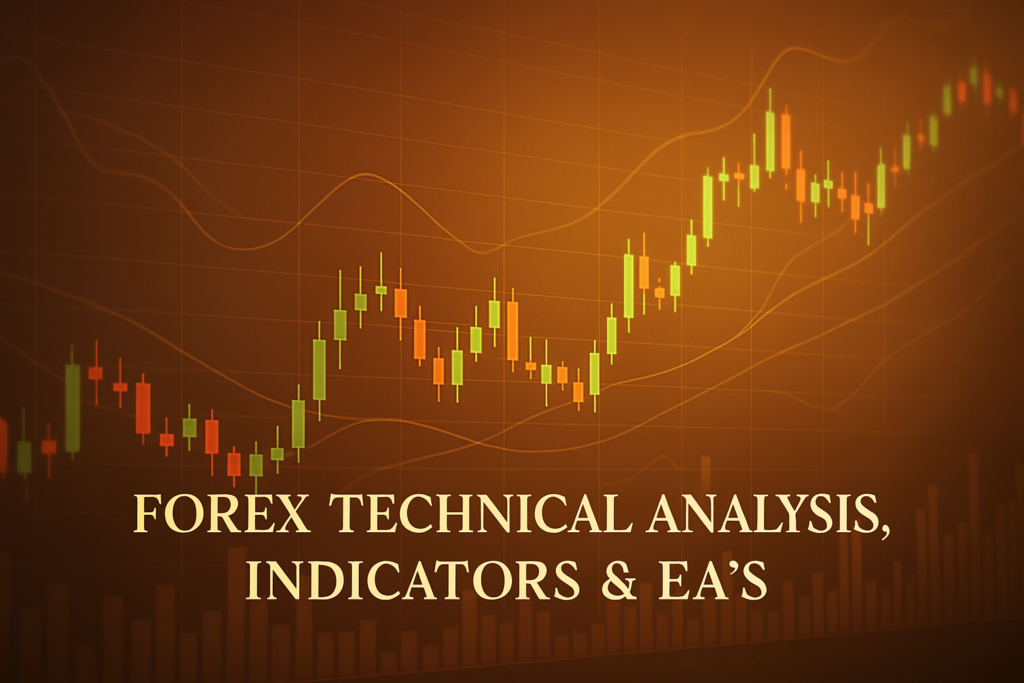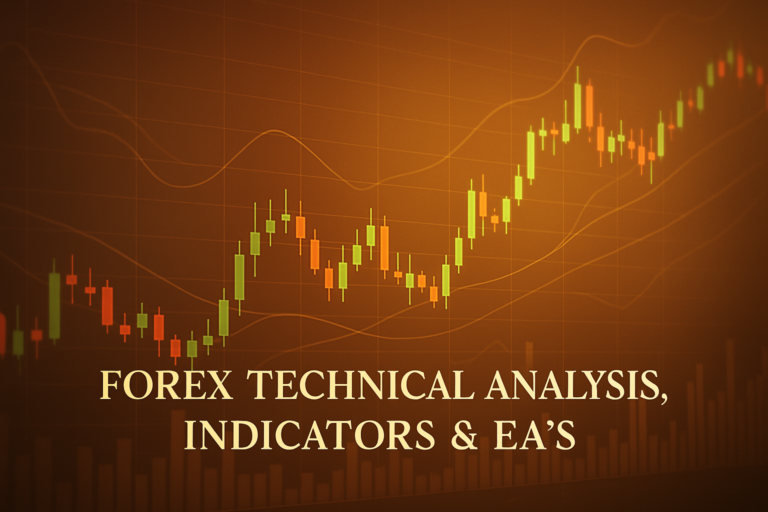
Learn how to effectively use MACD and Stochastic indicators in Forex trading strategies for better decision-making and improved profits.
Forex trading can feel like a roller coaster. Among the many tools traders use, MACD and Stochastic stand out. They help traders understand the market direction and momentum. Imagine having a compass while navigating through a dense forest. That’s what MACD and Stochastic do for traders.
However, both beginners and experienced traders often find them challenging. The complexity of these indicators can make it tough to use them correctly. This leads to confusion and missed opportunities. Understanding how to apply MACD and Stochastic is key to improving trading success. When used right, they can guide traders to make informed decisions and maximize profits.
In this article, we will explore MACD and Stochastic indicators, their history, advantages, and disadvantages. We will also share strategies on how to apply them effectively.
Many traders face issues such as the Need to remove multiple times from their charts. Let’s ensure you don’t become one of them.
What is a MACD and Stochastic?
MACD stands for Moving Average Convergence Divergence. It’s a tool that helps traders see the momentum of a stock or currency pair. Think of it as a way to visualize price trends over time. Stochastic, on the other hand, measures the speed and momentum of price changes. It helps traders identify potential reversal points in the market.
Types of MACD and Stochastic
There are different types of MACD and Stochastic indicators. The most common are:
- Simple MACD: Uses two moving averages to show the trend.
- Exponential MACD: Gives more weight to recent prices, making it quicker to react.
- Weighted Stochastic: Prioritizes recent price action for better accuracy.
How MACD and Stochastic Smooth Out Price Action
Both MACD and Stochastic smooth out price action by filtering out the noise. This means they help traders see the overall trend without getting distracted by small fluctuations. For example, if the MACD line crosses above the signal line, it indicates a potential buy signal.
Common Periods Used and Why
Traders often use specific periods with MACD and Stochastic to enhance accuracy. Common settings include 14 days for Stochastic and 12, 26, and 9 for MACD. These periods help in identifying trends effectively. Using the right periods can lead to better trading outcomes.
The History of MACD and Stochastic: How It Became Popular
Origin of MACD and Stochastic
The MACD indicator was created in the late 1970s by Gerald Appel. He wanted a tool to identify the strength of market trends. The Stochastic indicator was developed by George Lane in the 1950s. His aim was to measure momentum and predict price movements.
When Did Traders Start Using It Widely?
By the 1980s and 1990s, both MACD and Stochastic had gained popularity among traders. Many began to see their potential in different market conditions. Over time, these indicators became essential tools for both beginners and experts.
Real-Life Stories
Many professional traders attribute their success to MACD and Stochastic. For example, a trader named John used these indicators during a volatile market. He spotted a trend reversal using the Stochastic indicator and made a significant profit. Such stories inspire new traders to explore these tools.
Advantages and Disadvantages of MACD and Stochastic
Advantages
Using MACD and Stochastic has several advantages:
- Helps identify trends easily: Traders can spot upward or downward trends quickly.
- Useful for dynamic support and resistance: These indicators help find key levels in the market.
- Works well for crossover strategies: When lines cross, it often signals a trading opportunity.
Disadvantages
However, MACD and Stochastic also have disadvantages:
- lags behind price movements: They may give signals after a move has already happened.
- Can give false signals in sideways markets: In a flat market, these indicators can mislead traders.
How to Apply MACD and Stochastic on MT4 & MT5
Step-by-Step Guide to Adding MACD and Stochastic on Charts
Adding MACD and Stochastic to your MT4 or MT5 charts is simple. Just go to the indicators section and select them. Click ‘Apply’ and you’ll see them on your chart.
Customizing MACD and Stochastic Settings
You can customize the settings of MACD and Stochastic to suit your trading style. Change the periods, colors, and types to make them more effective for you.
Saving Templates for Easy Application
After customizing, don’t forget to save your template. This way, you can apply the same settings to different charts quickly.
5 to 7 Trading Strategies Using Only MACD and Stochastic
All Time Frame Strategy (M5 to D1)
This strategy works across all time frames. When the MACD line crosses above the signal line, consider it a buy signal. Conversely, a cross below suggests a sell signal. For example, if you see this on the M15 chart, enter a buy trade.
Trending Strategies
In a strong trend, use the MACD to confirm the direction. If the price is above the moving average and the MACD is positive, look for buy opportunities. For instance, if the price climbs, and the MACD confirms it, enter a trade.
Counter Trade Strategies
When the market is overbought or oversold, consider counter-trading. If the Stochastic shows overbought levels, it may be time to sell. For example, if the Stochastic hits 80, consider selling.
Swing Trade Strategies
Swing trading uses MACD and Stochastic for short-term gains. When the MACD shows a bullish crossover, enter a buy trade. If the trade moves in your favor, set a stop-loss to protect your profits.
5 to 7 Trading Strategies Combining MACD and Stochastic with Other Indicators
All Time Frame Strategy with RSI
Combine MACD with the Relative Strength Index (RSI). When the MACD shows a bullish crossover and the RSI is below 30, consider it a strong buy signal. For example, if both indicators align, enter a trade.
Trending Strategies with Moving Averages
Use MACD with moving averages. If the price is above the moving average and MACD confirms an upward trend, it’s a great opportunity to buy. For instance, if the MACD is rising, consider entering a buy trade.
Counter Trade Strategies with Bollinger Bands
When the price touches the lower Bollinger Band, check the Stochastic. If it shows oversold conditions, you may have a buy opportunity. For example, if the price rebounds, enter a trade.
Swing Trades with Fibonacci Retracement
Combine MACD with Fibonacci retracement levels. If the price retraces to a Fibonacci level and the MACD line crosses above, it’s a good buy signal. For instance, if it holds the level, consider entering.
The Forex market is influenced by various factors. For a deeper understanding, check our Forex Fundamental News Analysis May 28, 2025.
Top 10 FAQs About MACD and Stochastic
1. What is the MACD used for?
The MACD is used to identify potential buy and sell signals by showing the relationship between two moving averages of a security’s price.
2. How do I interpret the Stochastic indicator?
The Stochastic indicator helps identify overbought and oversold conditions. Readings above 80 indicate overbought, while readings below 20 indicate oversold.
3. Can I use MACD and Stochastic together?
Yes! Many traders use them together for confirmation of signals. This combination helps in making more informed trading decisions.
4. What is a good MACD setting?
A common setting is 12, 26, and 9. However, you can adjust these based on your trading strategy and preferences.
5. How can I avoid false signals?
To avoid false signals, combine MACD and Stochastic with other indicators. This will help confirm your trading decisions.
6. What is the best time frame to use?
It depends on your trading style. Short-term traders may prefer M5 or M15, while long-term traders may use H1 or H4.
7. Is MACD better than Stochastic?
Both indicators have their strengths. MACD is better for trend identification, while Stochastic is useful for spotting reversals.
8. Can I use MACD and Stochastic on all markets?
Yes, both indicators can be used in Forex, stocks, and commodities. They are versatile tools for various markets.
9. How do I practice using these indicators?
Use demo accounts to practice trading with MACD and Stochastic. This will help you gain confidence before trading with real money.
10. When should I exit a trade?
Look for signals from the MACD or Stochastic to exit a trade. If they indicate a reversal, it’s time to close your position.
Conclusion
Understanding MACD and Stochastic is crucial for successful Forex trading. These tools provide valuable insights into market trends and momentum. Remember to combine them with other indicators for better results.
Before putting real money on the line, test different strategies. This will build your confidence and help you find what works best for you. Happy trading!
Stay ahead of the game by reading expert-backed advice on this topic FXStreet, MetaTrader
Expand Your Knowledge
- 📌 Forex Trading Learning Road Map
- 📌 Forex Trading Course with no Fees
- 📌 Forex Trading Issues, Problems, and Solutions
- 📌 Forex Daily Forecast & Live Updates
- 📌 Forex Fundamental & News Analysis: Tomorrow’s Market Movers & Trade Opportunities
- 📌 Forex Education Hub: Learn & Profit
- 📌 Forex Technical Analysis, Indicators & EA’s
Start Trading Today
Ready to take your forex trading to the next level? Open an account with Exness, one of the most trusted platforms in the industry. 👉 Sign Up Now and trade with confidence!
My recommended broker stands out with ultra-low spreads for beginners, instant withdrawals, and zero spread accounts for pro traders.
Trusted since 2008, lightning-fast execution, no hidden fees, and a secure, transparent trading environment—giving you the edge you need to succeed. 🚀
YouTube Video Library: Related Videos
Note: The video above is embedded from YouTube and is the property of its original creator. We do not own or take responsibility for the content or opinions expressed in the video.



